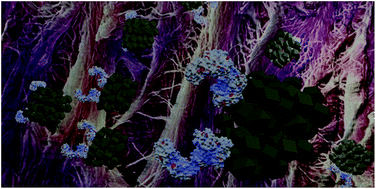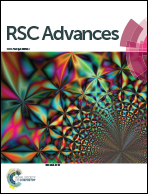Collagenase@magnetite: proteolytic composite for magnetically targeted minimally invasive surgery†
Abstract
Magnetic proteolytic composites attract great scientific attention as a potential controllable catalytic system for medical applications. The use in medical practice opens new horizons for targeted tissue lysis, while providing prospects for minimally invasive surgery and treatment of pathologies, such as adhesive disease. This article reports the first production of a fully biocompatible magnetically targeted composite based on the collagenase G enzyme entrapped within a sol–gel magnetite matrix. The composite material consists entirely of components approved by the FDA for parenteral administration. The entrapped enzyme demonstrates outstanding thermal stability: the denaturation temperature is higher by 18 °C and the activity is retained even at a temperature of 65 °C. The enzymatic activity of the composites is studied in details on different biosubstrates, such as collagen, gelatin, and collagen tissue samples of animal origin during in vitro tests. Also, the possibility of magnetic targeting is shown. The nanocomposite behaves itself as an effective proteolytic system with prolonged action and could be magnetically separated and reused without activity loss at least 4 times. Due to magnetic targeting, the efficiency of proteolysis could be enhanced up to 20 times.


 Please wait while we load your content...
Please wait while we load your content...